Xinyang Chen
SwiftTS: A Swift Selection Framework for Time Series Pre-trained Models via Multi-task Meta-Learning
Oct 27, 2025Abstract:Pre-trained models exhibit strong generalization to various downstream tasks. However, given the numerous models available in the model hub, identifying the most suitable one by individually fine-tuning is time-consuming. In this paper, we propose \textbf{SwiftTS}, a swift selection framework for time series pre-trained models. To avoid expensive forward propagation through all candidates, SwiftTS adopts a learning-guided approach that leverages historical dataset-model performance pairs across diverse horizons to predict model performance on unseen datasets. It employs a lightweight dual-encoder architecture that embeds time series and candidate models with rich characteristics, computing patchwise compatibility scores between data and model embeddings for efficient selection. To further enhance the generalization across datasets and horizons, we introduce a horizon-adaptive expert composition module that dynamically adjusts expert weights, and the transferable cross-task learning with cross-dataset and cross-horizon task sampling to enhance out-of-distribution (OOD) robustness. Extensive experiments on 14 downstream datasets and 8 pre-trained models demonstrate that SwiftTS achieves state-of-the-art performance in time series pre-trained model selection.
Handling Imbalanced Pseudolabels for Vision-Language Models with Concept Alignment and Confusion-Aware Calibrated Margin
May 04, 2025Abstract:Adapting vision-language models (VLMs) to downstream tasks with pseudolabels has gained increasing attention. A major obstacle is that the pseudolabels generated by VLMs tend to be imbalanced, leading to inferior performance. While existing methods have explored various strategies to address this, the underlying causes of imbalance remain insufficiently investigated. To fill this gap, we delve into imbalanced pseudolabels and identify two primary contributing factors: concept mismatch and concept confusion. To mitigate these two issues, we propose a novel framework incorporating concept alignment and confusion-aware calibrated margin mechanisms. The core of our approach lies in enhancing underperforming classes and promoting balanced predictions across categories, thus mitigating imbalance. Extensive experiments on six benchmark datasets with three learning paradigms demonstrate that the proposed method effectively enhances the accuracy and balance of pseudolabels, achieving a relative improvement of 6.29% over the SoTA method. Our code is avaliable at https://anonymous.4open.science/r/CAP-C642/
MoK-RAG: Mixture of Knowledge Paths Enhanced Retrieval-Augmented Generation for Embodied AI Environments
Mar 18, 2025Abstract:While human cognition inherently retrieves information from diverse and specialized knowledge sources during decision-making processes, current Retrieval-Augmented Generation (RAG) systems typically operate through single-source knowledge retrieval, leading to a cognitive-algorithmic discrepancy. To bridge this gap, we introduce MoK-RAG, a novel multi-source RAG framework that implements a mixture of knowledge paths enhanced retrieval mechanism through functional partitioning of a large language model (LLM) corpus into distinct sections, enabling retrieval from multiple specialized knowledge paths. Applied to the generation of 3D simulated environments, our proposed MoK-RAG3D enhances this paradigm by partitioning 3D assets into distinct sections and organizing them based on a hierarchical knowledge tree structure. Different from previous methods that only use manual evaluation, we pioneered the introduction of automated evaluation methods for 3D scenes. Both automatic and human evaluations in our experiments demonstrate that MoK-RAG3D can assist Embodied AI agents in generating diverse scenes.
Assessing Pre-trained Models for Transfer Learning through Distribution of Spectral Components
Dec 26, 2024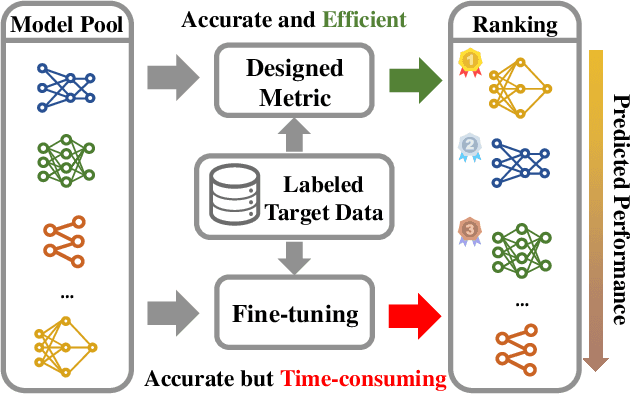

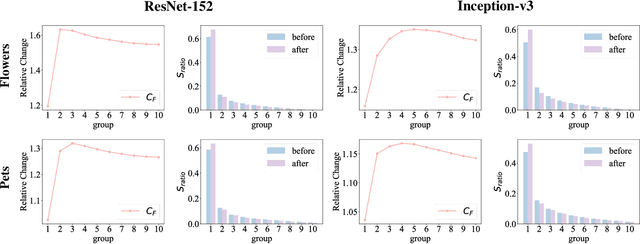

Abstract:Pre-trained model assessment for transfer learning aims to identify the optimal candidate for the downstream tasks from a model hub, without the need of time-consuming fine-tuning. Existing advanced works mainly focus on analyzing the intrinsic characteristics of the entire features extracted by each pre-trained model or how well such features fit the target labels. This paper proposes a novel perspective for pre-trained model assessment through the Distribution of Spectral Components (DISCO). Through singular value decomposition of features extracted from pre-trained models, we investigate different spectral components and observe that they possess distinct transferability, contributing diversely to the fine-tuning performance. Inspired by this, we propose an assessment method based on the distribution of spectral components which measures the proportions of their corresponding singular values. Pre-trained models with features concentrating on more transferable components are regarded as better choices for transfer learning. We further leverage the labels of downstream data to better estimate the transferability of each spectral component and derive the final assessment criterion. Our proposed method is flexible and can be applied to both classification and regression tasks. We conducted comprehensive experiments across three benchmarks and two tasks including image classification and object detection, demonstrating that our method achieves state-of-the-art performance in choosing proper pre-trained models from the model hub for transfer learning.
Graph Structure Learning for Spatial-Temporal Imputation: Adapting to Node and Feature Scales
Dec 24, 2024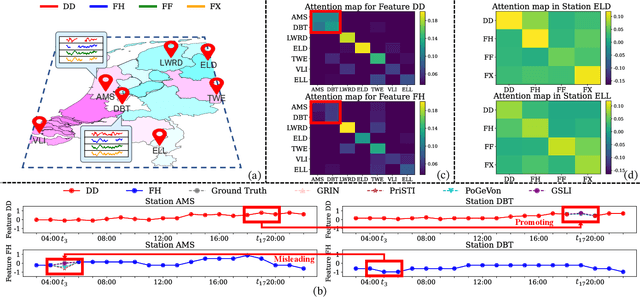

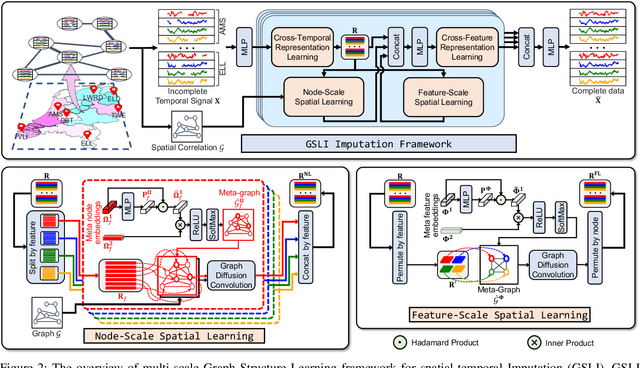
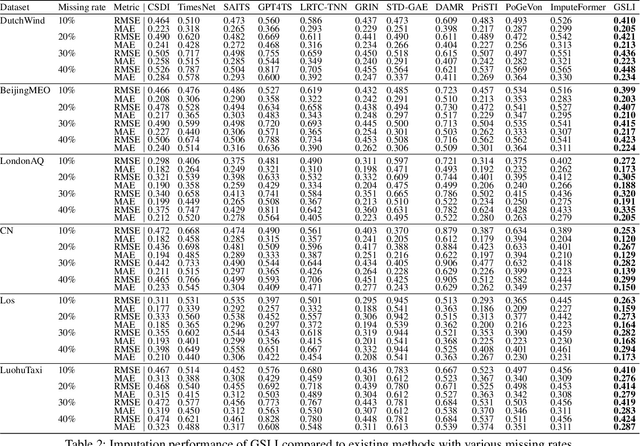
Abstract:Spatial-temporal data collected across different geographic locations often suffer from missing values, posing challenges to data analysis. Existing methods primarily leverage fixed spatial graphs to impute missing values, which implicitly assume that the spatial relationship is roughly the same for all features across different locations. However, they may overlook the different spatial relationships of diverse features recorded by sensors in different locations. To address this, we introduce the multi-scale Graph Structure Learning framework for spatial-temporal Imputation (GSLI) that dynamically adapts to the heterogeneous spatial correlations. Our framework encompasses node-scale graph structure learning to cater to the distinct global spatial correlations of different features, and feature-scale graph structure learning to unveil common spatial correlation across features within all stations. Integrated with prominence modeling, our framework emphasizes nodes and features with greater significance in the imputation process. Furthermore, GSLI incorporates cross-feature and cross-temporal representation learning to capture spatial-temporal dependencies. Evaluated on six real incomplete spatial-temporal datasets, GSLI showcases the improvement in data imputation.
Recommender Transformers with Behavior Pathways
Jun 13, 2022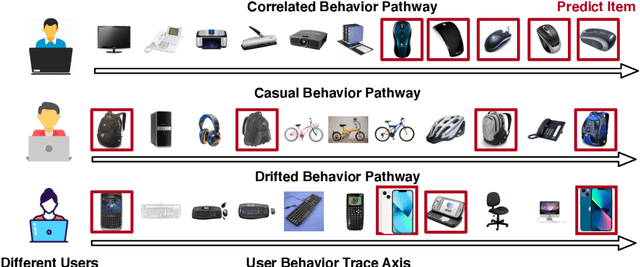
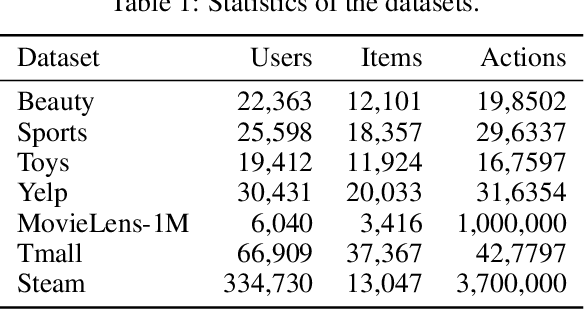
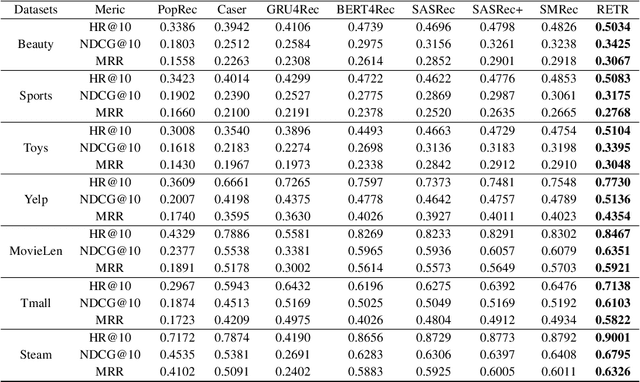

Abstract:Sequential recommendation requires the recommender to capture the evolving behavior characteristics from logged user behavior data for accurate recommendations. However, user behavior sequences are viewed as a script with multiple ongoing threads intertwined. We find that only a small set of pivotal behaviors can be evolved into the user's future action. As a result, the future behavior of the user is hard to predict. We conclude this characteristic for sequential behaviors of each user as the Behavior Pathway. Different users have their unique behavior pathways. Among existing sequential models, transformers have shown great capacity in capturing global-dependent characteristics. However, these models mainly provide a dense distribution over all previous behaviors using the self-attention mechanism, making the final predictions overwhelmed by the trivial behaviors not adjusted to each user. In this paper, we build the Recommender Transformer (RETR) with a novel Pathway Attention mechanism. RETR can dynamically plan the behavior pathway specified for each user, and sparingly activate the network through this behavior pathway to effectively capture evolving patterns useful for recommendation. The key design is a learned binary route to prevent the behavior pathway from being overwhelmed by trivial behaviors. We empirically verify the effectiveness of RETR on seven real-world datasets and RETR yields state-of-the-art performance.
X-model: Improving Data Efficiency in Deep Learning with A Minimax Model
Oct 09, 2021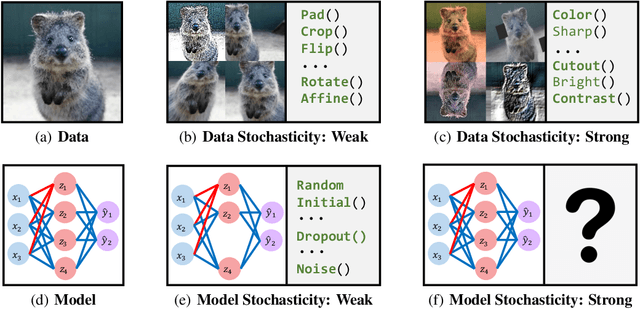
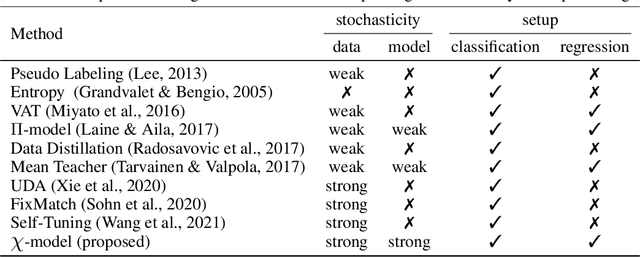
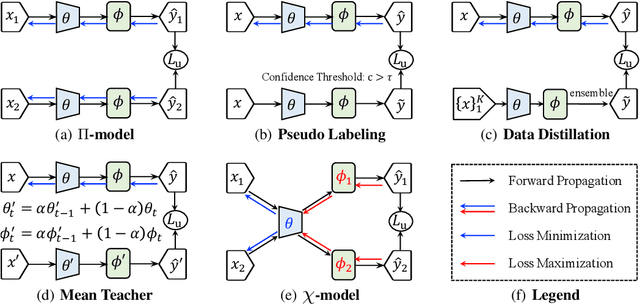
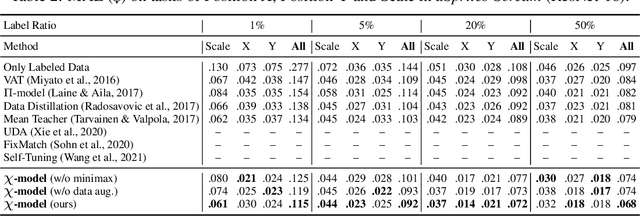
Abstract:To mitigate the burden of data labeling, we aim at improving data efficiency for both classification and regression setups in deep learning. However, the current focus is on classification problems while rare attention has been paid to deep regression, which usually requires more human effort to labeling. Further, due to the intrinsic difference between categorical and continuous label space, the common intuitions for classification, e.g., cluster assumptions or pseudo labeling strategies, cannot be naturally adapted into deep regression. To this end, we first delved into the existing data-efficient methods in deep learning and found that they either encourage invariance to data stochasticity (e.g., consistency regularization under different augmentations) or model stochasticity (e.g., difference penalty for predictions of models with different dropout). To take the power of both worlds, we propose a novel X-model by simultaneously encouraging the invariance to {data stochasticity} and {model stochasticity}. Further, the X-model plays a minimax game between the feature extractor and task-specific heads to further enhance the invariance to model stochasticity. Extensive experiments verify the superiority of the X-model among various tasks, from a single-value prediction task of age estimation to a dense-value prediction task of keypoint localization, a 2D synthetic, and a 3D realistic dataset, as well as a multi-category object recognition task.
 Add to Chrome
Add to Chrome Add to Firefox
Add to Firefox Add to Edge
Add to Edge